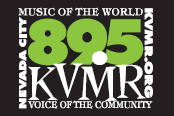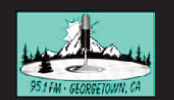
Predicament or Problem? Market update 11 17 2021

Predicament or Problem?
It is said that problems have solutions, whereas predicaments only have outcomes. If that is true, the U.S. economy’s future and indeed our immediate way of life, awaits an outcome that the Feds can do nothing about. Ex-Federal Reserve Chief Alan Greenspan used the word conundrum on occasion, yet conundrums do have outcomes, they are just difficult ones.
The predicament we now find ourselves revolves around the subject of last week’s column about inflation, the latest one trillion dollar spending bill passed this weekend, and the six trillion or so spent during 20/21 for CoVid relief.
Deficit spending and inflation go hand in hand. There is no argument on that economic reality. The debate is not whether inflation follows massive deficit spending. It does, it is now, and everyone knows it. The question is can the Feds stop inflation if it gets out of hand. The answer is yes, they can, but that is not the predicament.
The question becomes what is the effect on the economy from using the known tools to stop inflation.
Therein lies the predicament.
If inflation begins to accelerate to unacceptable levels, and it going pretty fast now, real damage to the economy and its inhabitants will occur. The most obvious problem is people won’t be able to afford to buy the things they need. But as horrible as that is, that will be the least of our problems.
Really bad inflation, known as hyperinflation, or even approaching hyperinflation, can cause breakages in the economic system, many of which can actually stop it from predictably functioning.
The result of that is the normal economic signals that transmit what it happening in the marketplace, to those participating in it (which is anyone who has to procure anything), begin to fail, sending false or even misleading signals to all concerned, which again, is all of us.
Since markets (not just stock markets but all markets where things are sold) depend on accurate economic signals to regulate the flow of goods and services from suppliers to end users, when these signals fail, the normal flow of everything is interrupted or may even fail altogether. This can translate into empty store shelves at best, and chaos on many levels at worst.
For a recent but relatively inconvenient example of a market failure, just look at the job market, where unemployment levels are relatively high, in the midst of millions of unfilled jobs. In spite of rising prices, slowing unemployment checks and stimulus programs ending, employers still cannot find enough worker to fill staffing positions. Although a serious problem, it will pale in comparison of what will happen should we even get close to a hyperinflationary environment.
The tools to stop inflation are the same used for normal inflation, except on a much more drastic scale. The Fed would increase interest rates and likely not the quarter point increases we have seen in the past. Interest rates were increased 3% in one day in the 80’s. Experts agree an increase of this proportion would crash the economy in today’s environment. Social programs would have to be eliminated or drastically cut. Government spending would have to be significantly cut. The Fed would have its hands tied to initiate more stimulus and bailouts as this is what caused the problem so those suffering would get little help from the government. Credit and loans would likely have to be recalled in an attempt to remove cash from the system. The credit markets would likely freeze up due to the unpredictable yields of fast moving interest rates. Both government, business and individual balance sheets would explode due to rising interest rate costs to service existing debt. In essence, all hell would break loose, and the Feds, having only one tool in the proverbial toolbox (printing money) would be powerless to use it as that is what caused the problem in the first place.
Simply put, the predicament is that the very thing they would use to address the economic malady, caused the malady.
With no solution, the Feds have essentially painted themselves into a corner. Hence the statement, “print or die”, which always eventually morphs into “print and die”.
Not a happy ending I know.
This article is opinion only of Marc Cuniberti, and may not represent those of this news media and should not be construed as investment advice nor represents the opinion of any bank, investment or advisory firm. Neither Money Management Radio (“Money Matters”) nor Bay Area Process receive, control, access or monitor client funds, accounts, or portfolios. Contact: (530)559-1214 or news@moneymanagementradio.com
Approved Vantage








